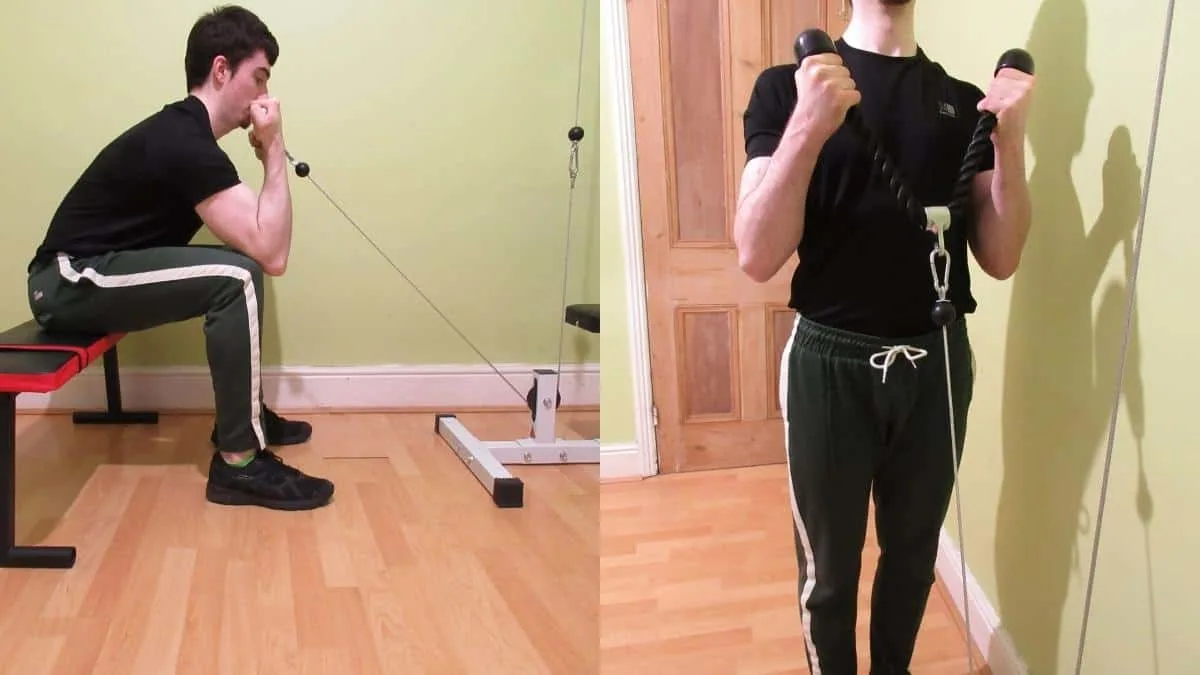If you want to discover the most effective cable bicep exercises for muscle growth, strength development, and the pump, then you’re in the right place. Over a period of several months, we tried, tested, and analyzed 23 different bicep cable exercises to determine which ones produce the best and most reliable results.
Here’s what we found.
Related: Bicep workouts with dumbbells│Tricep cable workouts
Top 7 cable bicep exercises
Cable machine bicep exercises provide constant muscle tension because from the moment that you lift the weights off the stack, it’s entirely down to your arms to support the resistance. But since the machine helps with the stabilization part of the workout, cables are generally more comfortable to use than free weights, which typically place significant demands on your joints and connective tissue structures.
1. Standing cable curls
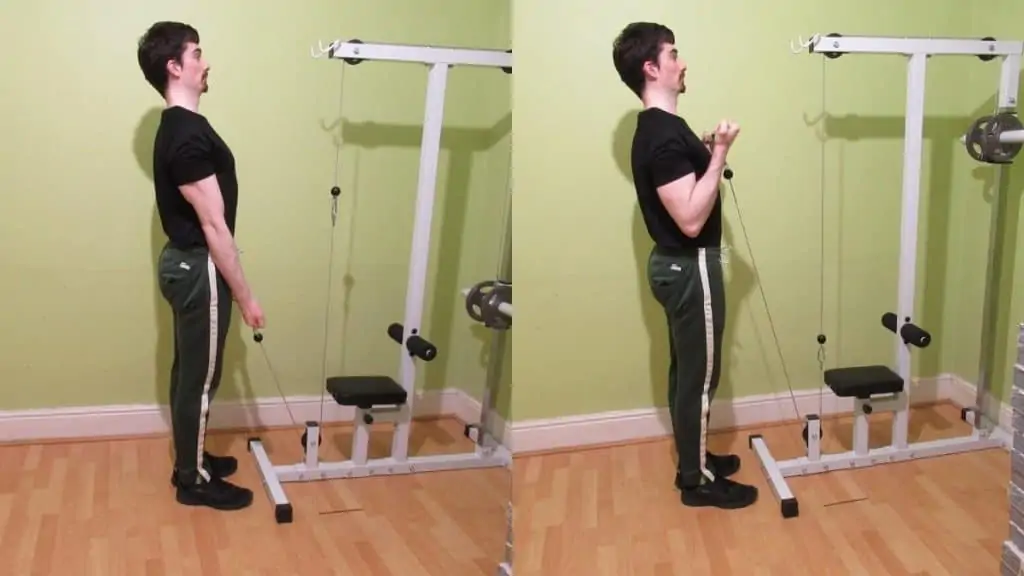
The tried and tested cable curl is a proven exercise for building arm mass conveniently. Unlike some of the other exercises that you’ll see, cable curls require very minimal setup; all you need to get those bicep gains is a low pulley and a straight bar attachment.
Moreover, since you’re performing the exercise standing, you can lift more weight because your core is in a powerful position to stabilize your body. So since the potential to overload your biceps with cable curls is naturally very high, they’re definitely one of the most effective movements for maximizing muscle hypertrophy. [1]
- Connect a straight bar to a low pulley.
- Grab the bar with a medium underhand grip.
- Let your elbows fully extend so that the bar is resting against your thighs.
- Curl the bar toward your shoulders until the undersides of your forearms touch your biceps.
- Hold the muscle contraction for a split second and then lower the bar under control until your elbows are locked out.
- Repeat for 3-4 sets of 8-12 reps.
2. Rope hammer curls

Rope hammer curls enable you to lift more weight than on any other exercise because your biceps have your big strong brachioradialis to help them out. Hammer curls are also highly effective for bringing up the brachialis, which, although a small muscle, can help to push out your biceps and make them look more peaked when it’s well-developed.
- Connect a rope attachment to a low pulley.
- Grab the rope with a neutral grip.
- Hold the rope against your thighs so that your elbows are almost fully extended.
- Curl the rope toward your shoulders by flexing your biceps and the top of your forearms.
- Keep curling until your biceps and forearms make contact.
- Lower the weight under control until your elbows are once again close to being fully extended.
- Repeat for 3-4 sets of 8-12 reps.
3. High cable curl
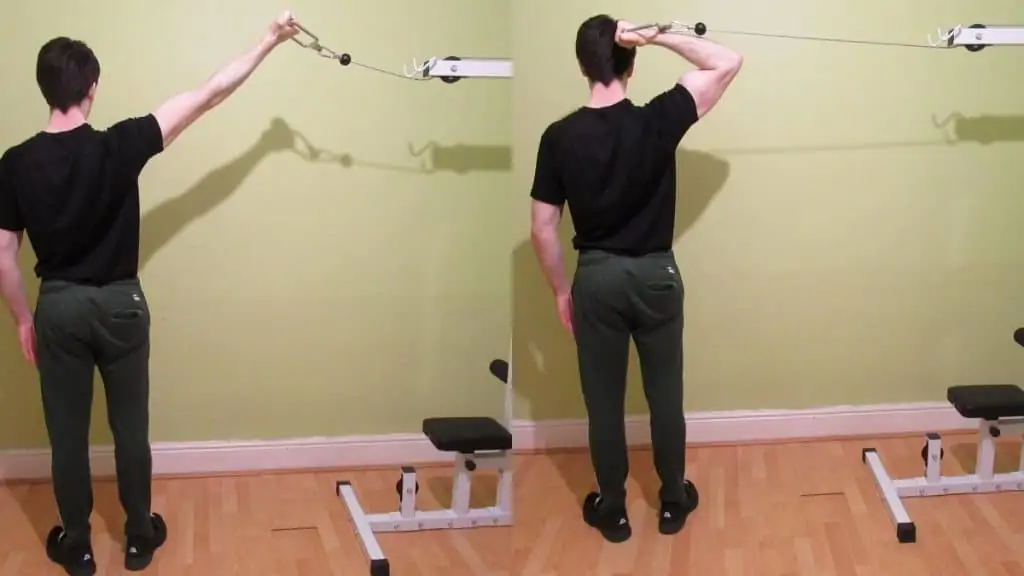
The one arm high cable curl should be a staple in your cable biceps workout because, unlike most other exercises, it works your biceps in their fully shortened anatomical position. This naturally means that the movement creates an intense peak contraction and a powerful pump because your bicep muscle fibers are extremely tensed up in this kind of overhead positioning.
- Attach a D-handle or stirrup handle to the high pulley of a cable column.
- Stand side-on to the cable machine and then grab the handle with an underhand grip.
- Take two steps away from the machine so that the weight you selected becomes elevated off the stack.
- Curl the handle behind your head and raise your elbow upward slightly as you maximally contract your biceps.
- Aim to turn your pink finger behind you as you squeeze your biceps to intensify the contraction even more.
- Then, release the handle under control until your arm is fully extended.
- Repeat the motion for 3-4 sets of 10-15 reps.
4. Behind the back cable curl
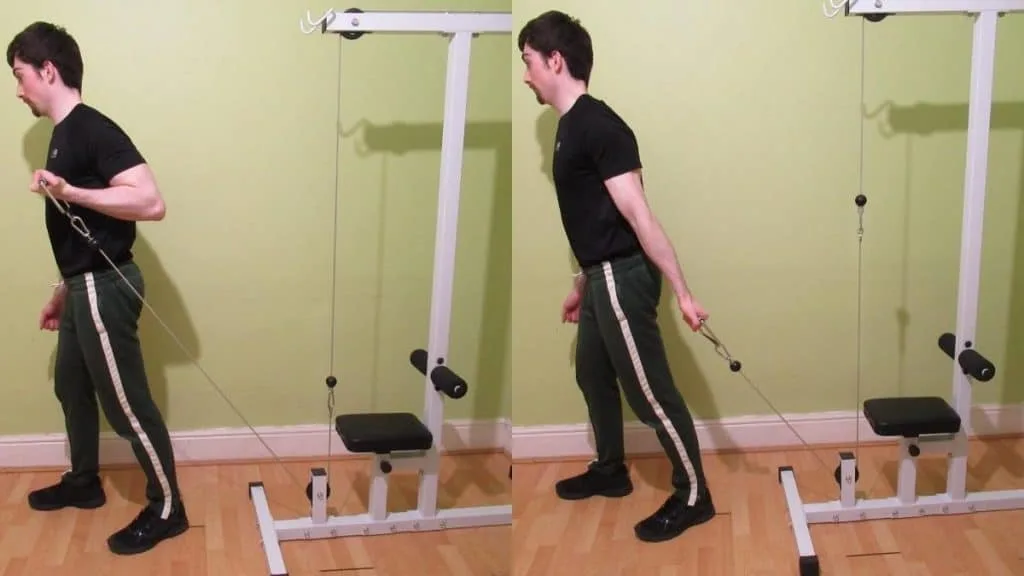
If you want to improve the long (outer) head of your biceps, then the behind back cable curl is one of the best exercises for the job. This is so because by curling with your arm behind your torso, you’re naturally shifting the biomechanical emphasis onto the outer muscle fibers of your biceps.
So if you want your arms to look aesthetic from every angle, it’s highly recommended to include this drill in your bicep cable workout or to perform alternating cable curls using both sides of the machine.
- Attach a D-handle or stirrup handle to the low pulley of a cable station.
- Grab the attachment with an underhand grip and then face away from the machine.
- Take a big step away from the cable unit so that the weights that you selected come off the stack.
- Let your arm drift behind your body, and then curl the handle toward your shoulder.
- Keep curling until the underside of your forearms makes contact with your biceps.
- Hold the contraction for a moment and then slowly lower the handle until your arm is fully extended.
- Repeat for 3-4 sets of 8-15 reps per arm.
5. Reverse cable curl

If you want arms that look thick and full—especially when they’re hanging by your sides—then you should definitely do reverse cable curls because they work the often overlooked brachioradialis muscle. This is the meaty muscle that sits on the top of your forearm (thumb side) and which visually connects your lower arms to your upper arms. [2]
- Attach a straight bar to a low pulley. If you have wrist problems, use a curl bar like you would for the EZ bar cable curl.
- Grab the bar with an overhand grip and let it rest against your thighs.
- Pin your elbows into your sides, and then curl the bar toward your shoulders.
- Keep going until the tops of your forearms touch your biceps.
- Hold the contraction for a split second and then lower the weight under control until your elbows are locked out.
- Repeat for 3-4 sets of 8-20 reps (you can lift heavy on reverse curls or use them as a finisher)
6. Lying cable curl
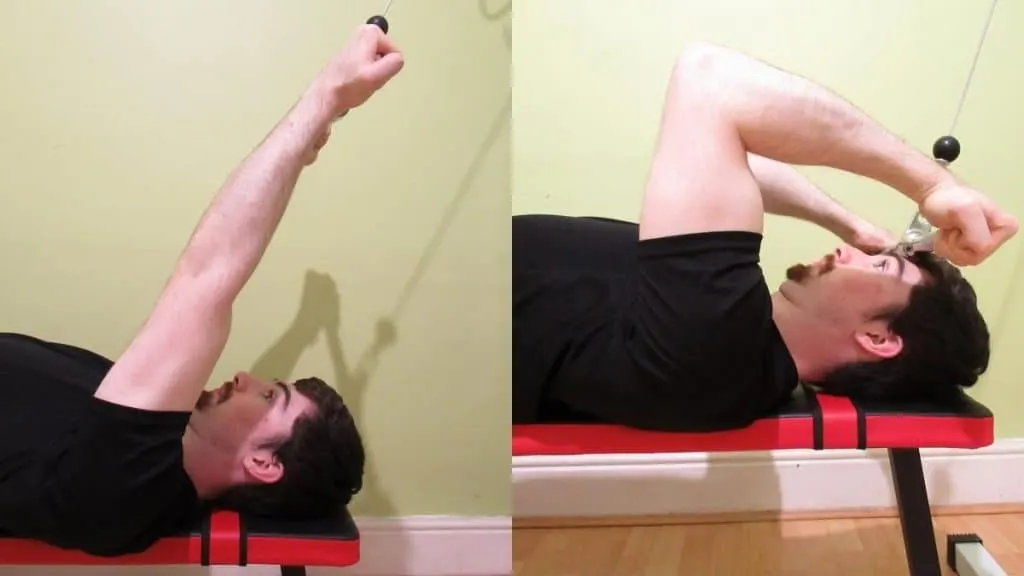
Lying cable curls are more complicated to set up than the other cable bicep exercises (especially in busy gyms) because you need to wheel a bench over to a pulley. The benefit is that, like cable spider curls, the exercise provides an addictively intense muscle contraction that not many other movements can rival. So if you have the means to perform this underrated bicep builder, then it’s highly recommended to give it a shot so that you can experience the skin-splitting pump for yourself.
- Position a weight bench in front of a cable column.
- Move the pulley to its highest position (if applicable) and attach a straight bar.
- Sit on the bench facing away from the machine and grab the bar with an underhand grip.
- Lie down on the bench—bar in hand—so that the pulley is directly over your head.
- Curl the bar down toward your forehead and squeeze your biceps forcefully.
- Savor the contraction for a second and then release the weight by letting the bar travel upward until your elbows are almost fully locked out.
- Repeat for 3-4 sets of 12-20 reps.
7. Cable preacher curl
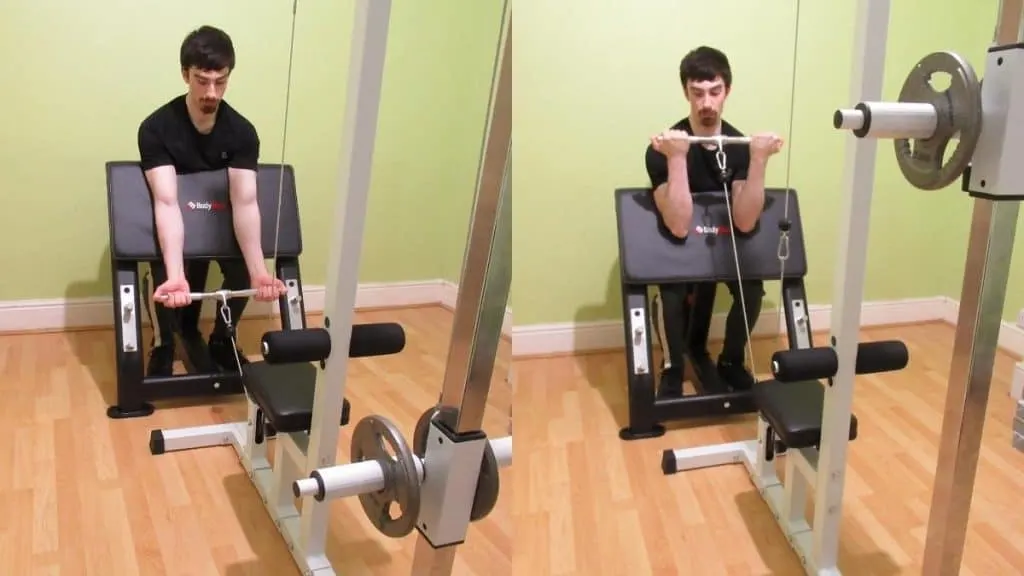
If you’re a bodybuilder, then the cable preacher curl gives you the best of both worlds; constant tension and supported upper arms. In other words, the cables ensure that you naturally get a great muscle pump, and the preacher pad helps you to keep tension on the target muscle because by bracing your arms against the pad, you can’t cheat the weight up with your other muscles as you can in a barbell curl, for example.
But if positioning a preacher bench in front of a cable machine isn’t feasible in your gym, then you can also perform this exercise one arm at a time by bracing your arms against a weight bench instead. It’s a great cable curl alternative because it really isolates your biceps.
- Position a preacher curl station (or a weight bench) in front of a cable machine.
- Connect a straight bar to the low pulley and grab it with an underhand grip.
- Walk the bar away from the machine and then sit on the seat of the preacher station.
- Brace your upper arms against the pad and let your arms fully extended.
- Curl the bar toward your shoulders and squeeze your biceps as hard as you can.
- After holding the contraction for a moment, slowly lower the bar until your arms are once again extended.
- Repeat for 3-4 sets of 10-15 reps.
Cable bicep workout routines
There are three bicep cable workouts in total, each of which corresponds to a different goal. If you like the sound of multiple routines, then you can include two of them in your program as long as you perform the workouts on different days with adequate rest in between (3-5 days).
Workout 1: Overall mass
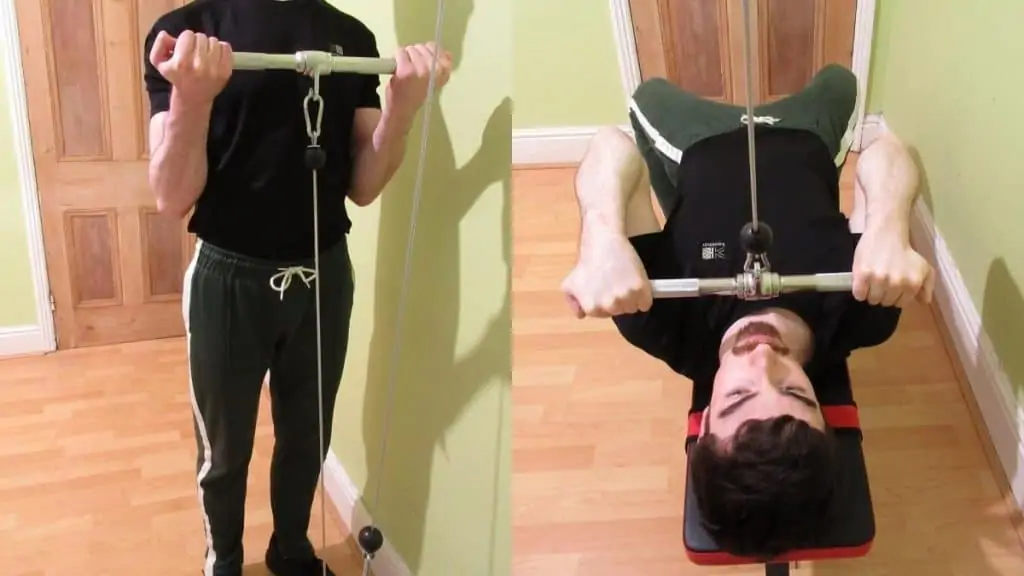
Performing your bicep workouts with cables is an excellent method for adding slabs of mass to your biceps because pulley systems naturally provide constant tension and a large range of motion. [3] As such, your biceps get pushed closer to muscular failure (and thereby muscle growth) because they don’t get a chance to rest during your sets.
Aim to leave 1-2 reps in the tank on each set unless otherwise stated. This way, you’ll be able to perform more total training volume, which, in conjunction with other factors like form and proximity to muscular failure, is the primary stimulus for muscle growth.
1: Cable curl — 4 x 6-10 reps
2: Reverse cable curl — 4 x 10-12 reps
3: Incline cable curl — 3 x 12-15 reps
4: Guillotine curl — 3 x 15-20 reps (last set to failure)
Workout 2: Strength
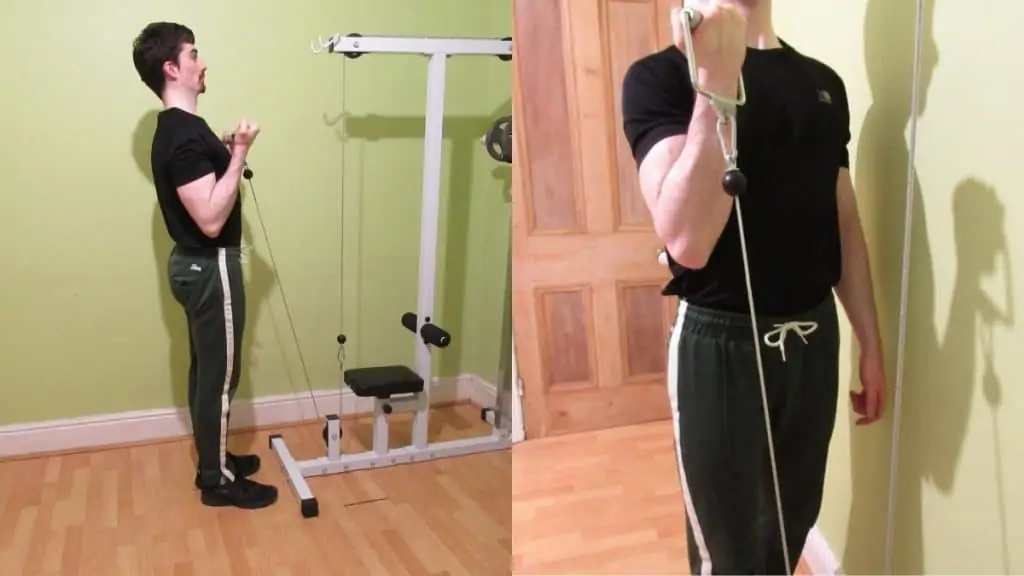
If you thought that throwing around heavy free weights was the only way to get strong as a bull, then think again. Some cable machines offer in excess of 200lbs of resistance these days, which is more than enough weight for a relatively small muscle group like your biceps.
The volume is lower than in the other workout, but since you’ll be able to lift more weight, your biceps will most definitely grow bigger as well as stronger.
1: Standing curls — 5 x 6-8 reps
2: Reverse curls — 4 x 8-10 reps
3: Standing one arm cable curl — 3 x 12-15 reps
Workout 3: Pump and burn
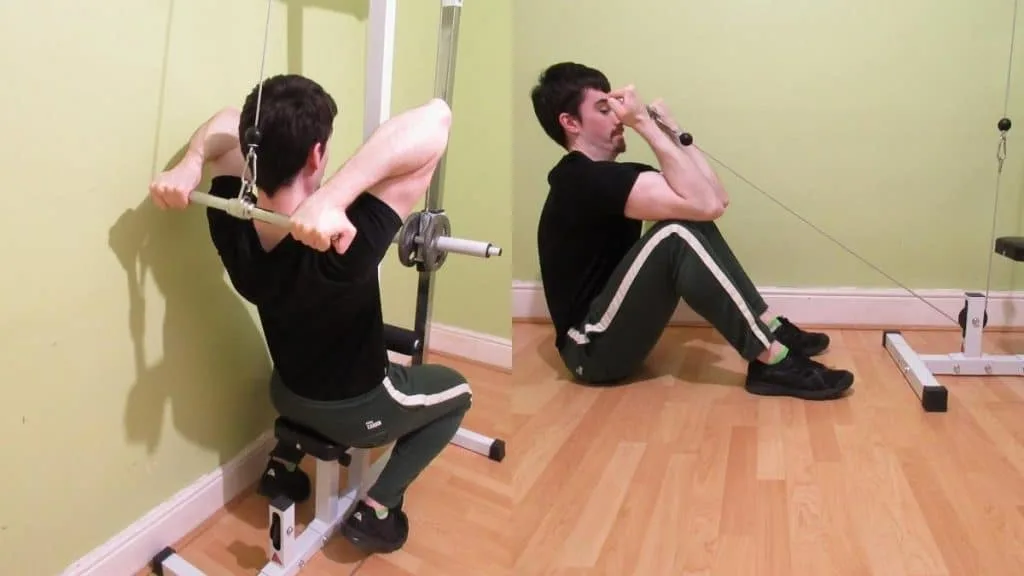
If you’re heading out for the night or are preparing for a physique contest and just want to get your pump on without the pressure of hitting a specific rep target, then this is the cable bicep workout for you.
The only requirement is that you do at least 15-20 reps per set so that you can maximize your pump while minimizing the strain on your connective tissue. This fun workout actually makes a great addition to your program in conjunction with one of the other two workouts because it gives you a chance to improve your mind-muscle connection, completely unencumbered by any ambition to set new PRs.
1: Cable concentration curls — 3 x 15+ reps
2: Cable drag curls — 3 x 15+ reps
3: Cable behind the neck curl — 3 x 15+ reps
How to improve your bicep cable workouts
Performing a bicep workout with cables can increase your muscle pump, prolong the time under tension, and help to ease any joint discomfort that might have been brought on by heavy free weight training (see our cable curls vs dumbbell curls guide for more differences). However, for the best results, make sure to follow these muscle growth guidelines.
Use good form
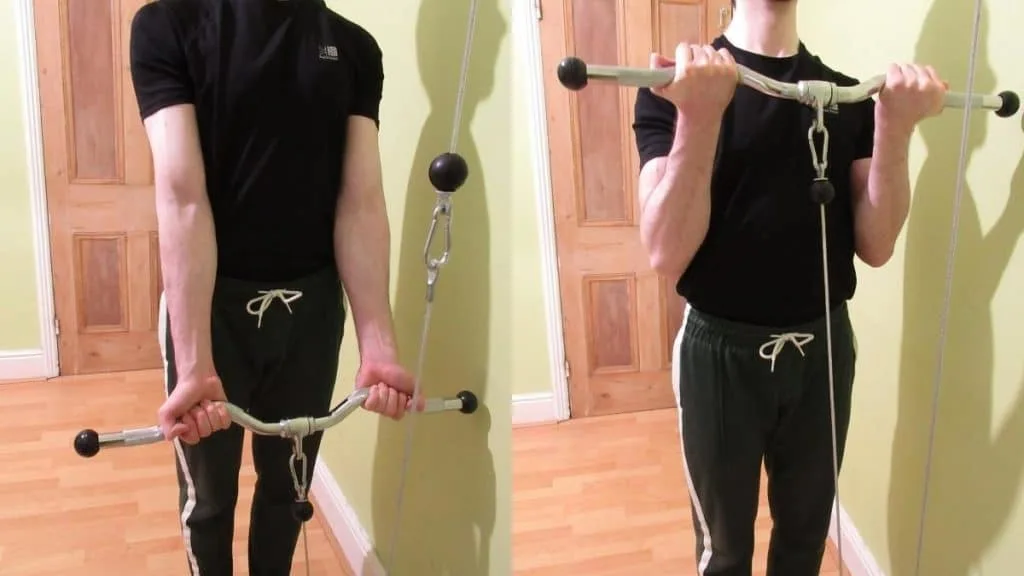
Lift with the proper form. Sounds simple enough, doesn’t it?
Yet, you’d be surprised at just how many lifters—even when training with cables—manage to let their ego get the better of them. But by cheating the weight up with their lower backs, knees, and hips, these trainees are only cheating themselves out of muscle growth.
Although swinging the weight up with whatever muscles will contract in the moment will undoubtedly make you (not specifically your biceps) “stronger,” it won’t actually put any extra tension on the target muscle because the resistance will get distributed across the other muscles that are helping you to cheat.
Plus, lifting with sloppy form is notorious for causing injuries. And for what? As we just learned, poor technique doesn’t even result in more bicep growth.
Work both bicep heads
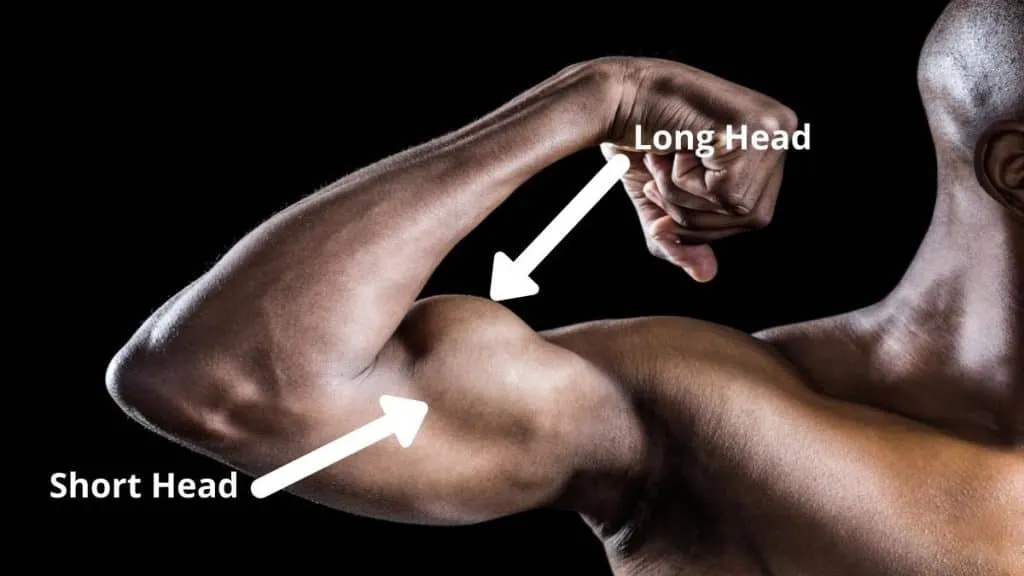
The long (outer) head of your bicep is emphasized anytime you flex your arm with your elbow behind your body, such as in a bayesian curl or a seated cable curl.
However, you can also shift more emphasis onto the outer muscle fibers by lifting with a narrower grip, as you would naturally do in close grip cable curl.
To work the short (inner) head of your biceps, you need to perform exercises where your arms are in front of your body. But again, you can also modify your hand positioning and do wide grip cable curls to shift tension onto the inner fibers.
Don’t neglect the surrounding muscles
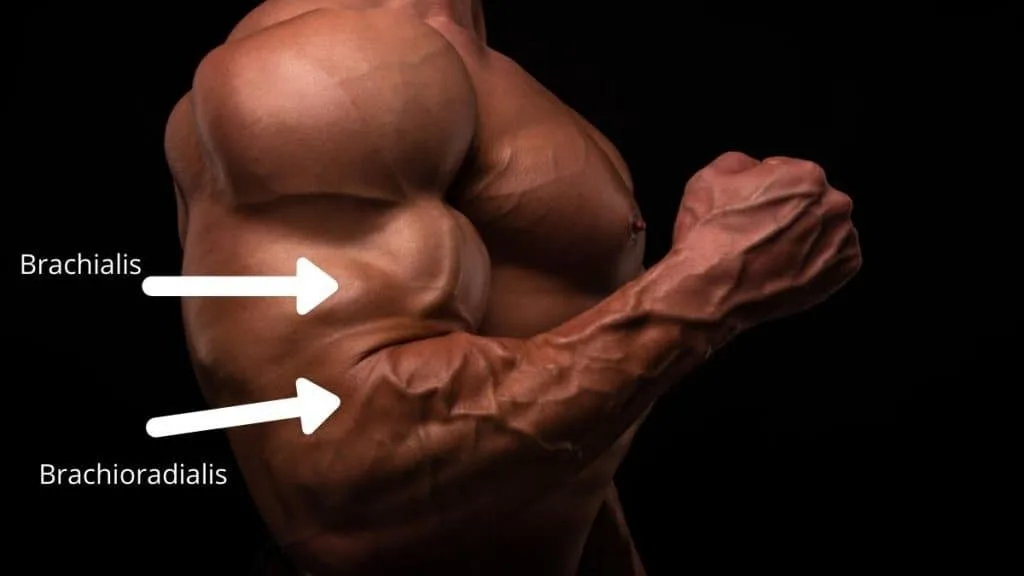
It’s easy to forget about the brachialis and brachioradialis muscles when designing your ideal cable biceps workout. However, if you want complete arm development and a physique that’s a cut above the rest, then you need to do exercises like the Zottman cable curl that require a neutral grip (hammer curls too) or a pronated grip (reverse curls) because these movements places extra tension on the thick forearm muscle that’s known as the brachioradialis.
Curling with a neutral or pronated grip will also help to bring up your brachialis. This small yet mighty arm muscle helps to improve your bicep peak because it pushes the biceps out and makes them look taller when flexed.
Related: Cable curl vs barbell curl
Conclusion: How effective are bicep cable exercises?
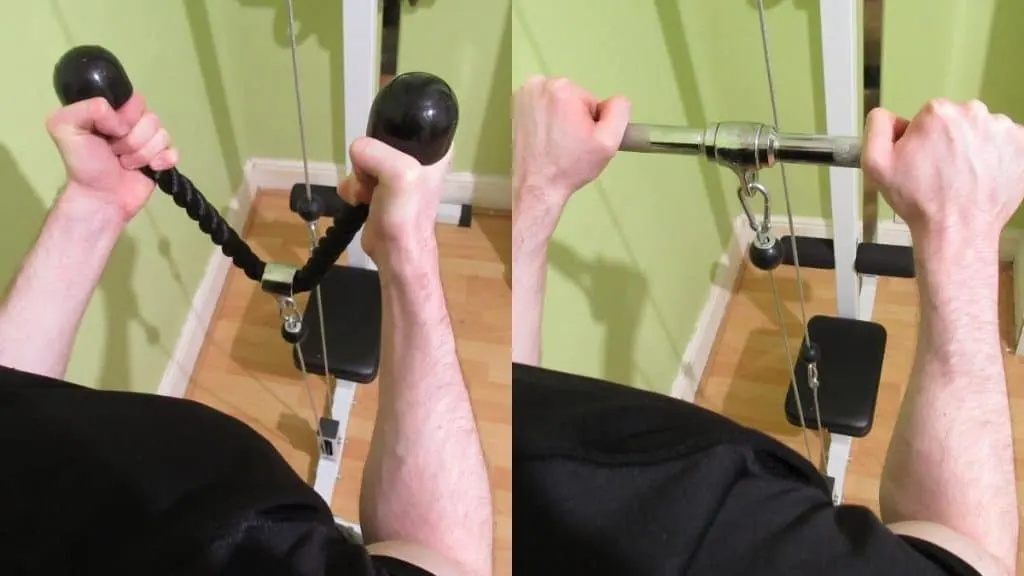
If you want to ignite new muscle growth by giving your arms that growth-provoking constant tension, then it’s highly recommended to include some cable bicep exercises in your workout routine.
Although free weights are certainly safe when you lift with good form, bicep cable exercises are easier on your wrist and elbow joints because the machine performs some of the stabilization work for you, which in turn takes some of the tension off your connective tissue.
There are many brilliant bicep cable workouts available, and each routine will definitely have its pros and cons. For example, some workouts are better for maximizing your muscle growth, while others are more effective for supercharging your strength development.
The most crucial factor that determines the quality of your results, however, is consistency. Make sure to stick at each routine long enough to where you can actually see noticeable strength gains. Progressive overload, after all, is one of the fundamental training principles that nobody in the pursuit of bicep gains should ignore.
References
- Schoenfeld, B. J. (2010). The Mechanisms of Muscle Hypertrophy and Their Application to Resistance Training. Journal of Strength and Conditioning Research, 24(10), 2857–2872. https://doi.org/10.1519/jsc.0b013e3181e840f3
- Boland, M. R., Spigelman, T., & Uhl, T. L. (2008). The Function of Brachioradialis. The Journal of Hand Surgery, 33(10), 1853–1859. https://doi.org/10.1016/j.jhsa.2008.07.019
- Signorile, J. F., Rendos, N. K., Heredia Vargas, H. H., Alipio, T. C., Regis, R. C., Eltoukhy, M. M., Nargund, R. S., & Romero, M. A. (2017). Differences in Muscle Activation and Kinematics Between Cable-Based and Selectorized Weight Training. Journal of Strength and Conditioning Research, 31(2), 313–322. https://doi.org/10.1519/jsc.0000000000001493

